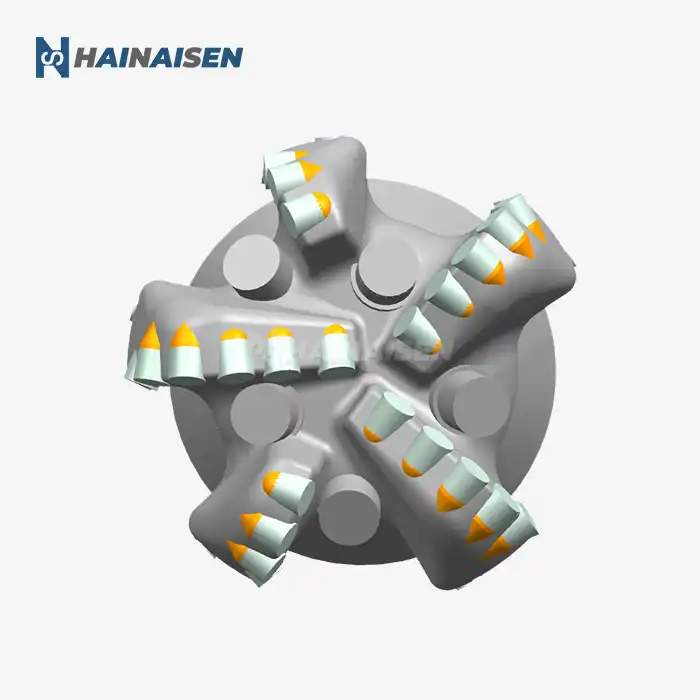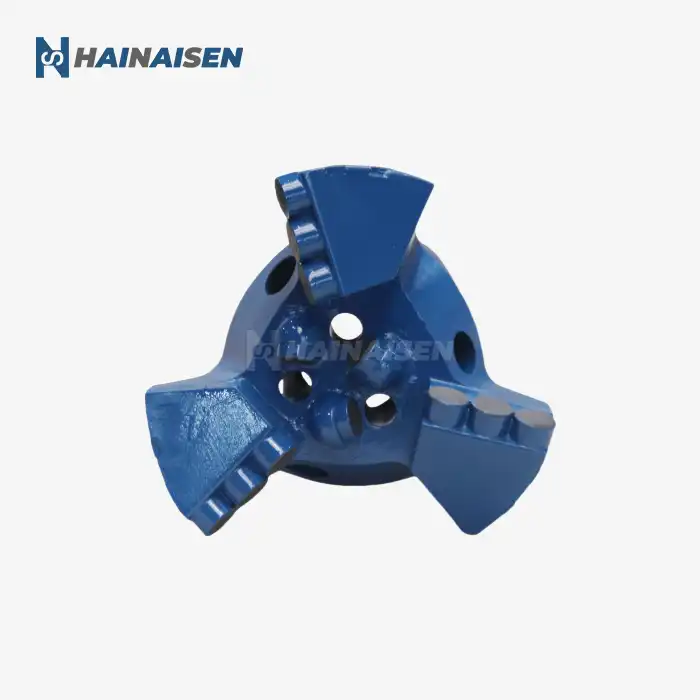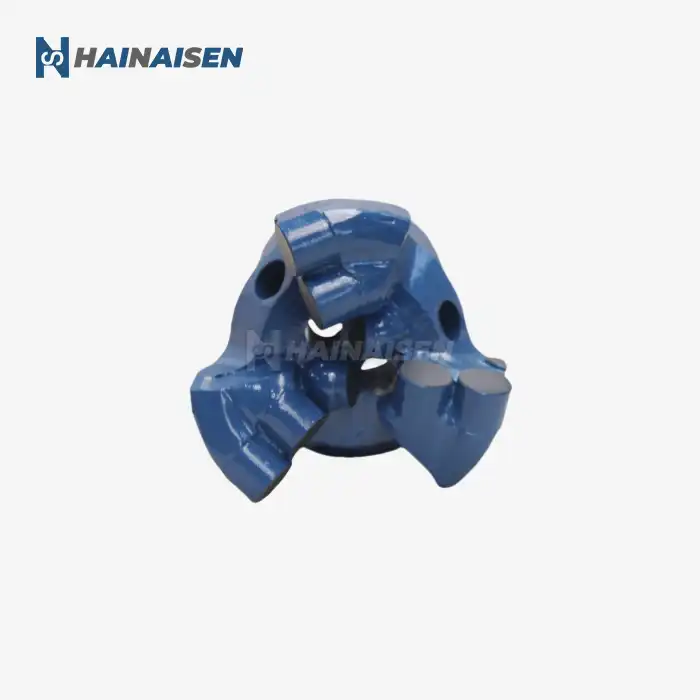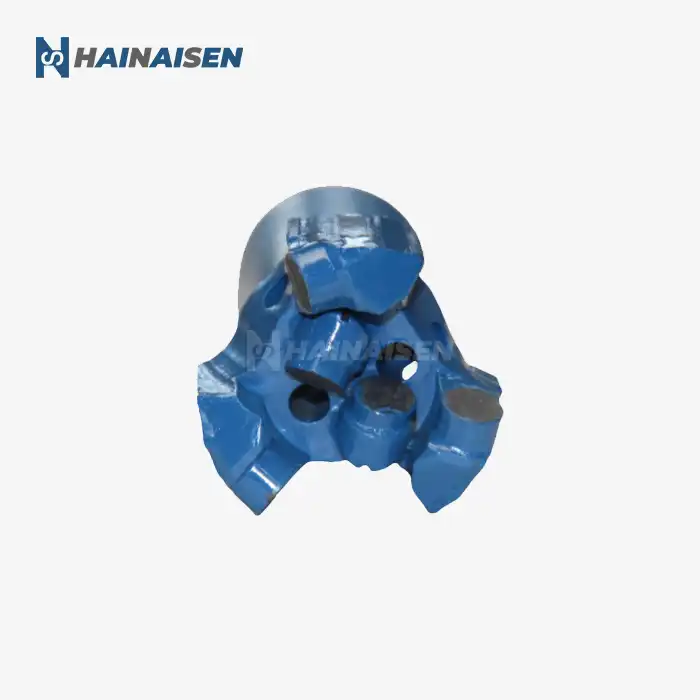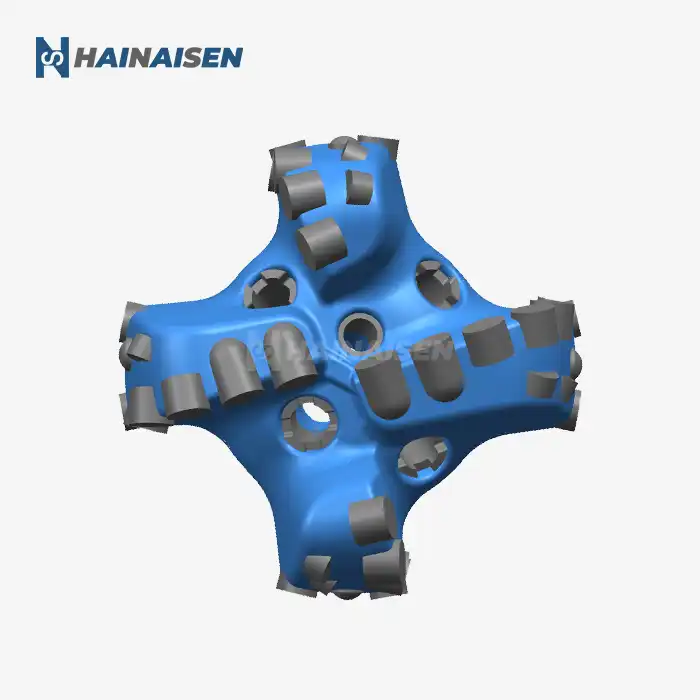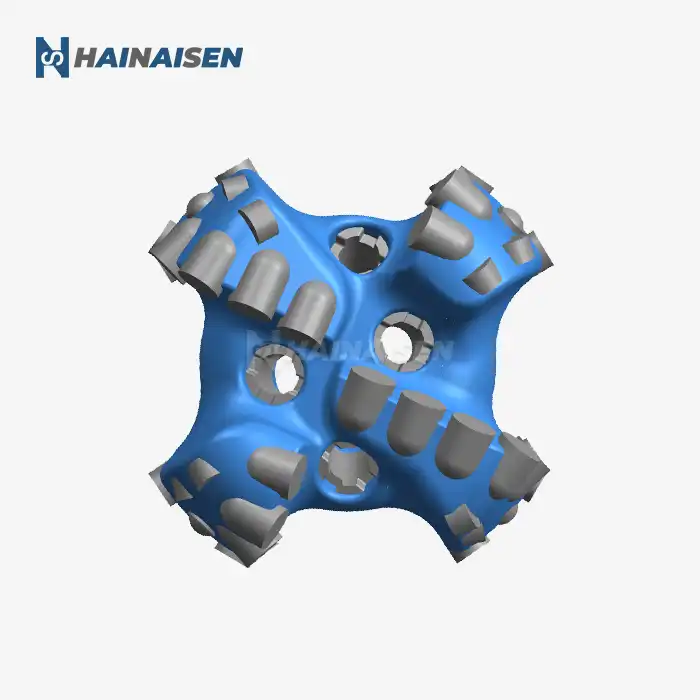Materials Science Behind Drill Bit Durability
Advanced materials science is the reason why Six Blade Wing Petroleum Drill Bits last so long. These bits are made from a carefully chosen mix of high-strength materials that work together to make them strong enough to survive the harsh conditions that come up during drilling.
High-Strength Steel Body
High-strength steel alloys are used to make the core of the drill bit. The engineers behind these metals made sure they have the right amount of toughness and hardness. The steel body is what holds the whole bit together. It keeps the structure strong and doesn't bend under high loads and temperatures.
Polycrystalline Diamond Compact (PDC) Cutters
The cutting elements of the drill bit are made from Polycrystalline Diamond Compact (PDC). PDC cutters are renowned for their exceptional wear resistance and thermal stability. The diamond particles in PDC are bonded together at high temperatures and pressures, creating a super-hard material that can maintain its cutting edge even in abrasive formations.
Tungsten Carbide Matrix
In many cases, a tungsten carbide matrix is built into the bit to make it more resistant to contact and protect against wear. This grid helps to spread out shock loads and keeps the steel body from wearing away, especially in places where fluids are moving quickly.
Specialized Coatings
Advanced coatings are applied to critical components of the Six Blade Wing Petroleum Drill Bit to further improve thermal stability and wear resistance. These coatings can include diamond-like carbon (DLC) films or nanostructured materials that provide an additional layer of protection against extreme temperatures and abrasive environments.

Extreme Conditions: Testing Six Blade Wing Bits
It is not a guess that Six Blade Wing Petroleum Drill Bits will work in tough drilling conditions. These bits are put through a lot of tests to make sure they can handle the harsh conditions that come up in real life.
High-Temperature Simulation
High temperatures that are managed are used to make drill bits work like they would down in the ground. These tests check how thermally stable the materials and joints are, making sure that the bit can keep its shape and continue to cut effectively at temperatures often higher than 150°C (302°F).
Impact Resistance Testing
Drill bits are put through impact tests with special tools to see how resistant they are to shock. To do this, the bit is hit with high-energy objects over and over again, simulating the jarring forces that happen when digging. The bit must be able to handle these hits without breaking or getting seriously damaged in order for it to last and work well.
Abrasive Wear Simulation
Accelerated wear tests are conducted using abrasive slurries and specialized machinery to simulate the erosive effects of drilling fluids and formation materials. These tests help quantify the wear resistance of different components and validate the effectiveness of protective coatings and materials.
Fatigue Testing
To check how well the drill bit resists wear and tear, cyclic stress tests are used. It is very important to do this when checking how long welded parts and high-stress areas in the bit structure will last.
Hydraulic Performance Evaluation
The hydraulic efficiency of the Six Blade Wing Petroleum Drill Bit is tested using flow visualization techniques and pressure drop measurements. This ensures that the bit design provides optimal fluid flow for effective cuttings removal and bit cooling, which are essential for maintaining thermal stability during operation.
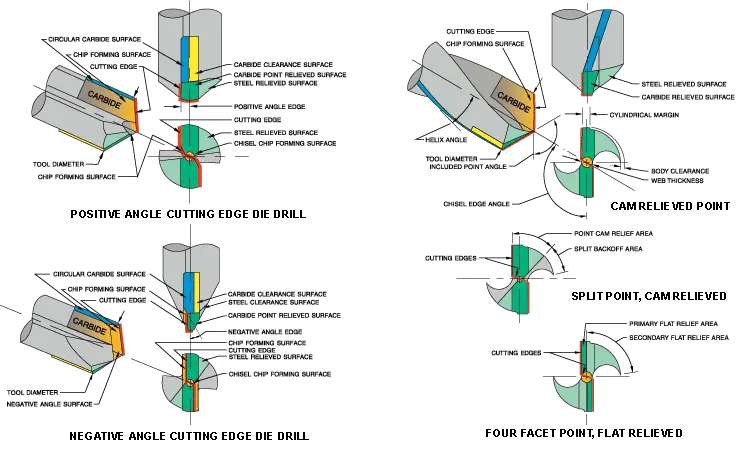
Optimizing Drill Bit Design for Enhanced Performance
The design of Six Blade Wing Petroleum Drill Bits is continuously evolving to meet the increasing demands of the drilling industry. Advanced optimization techniques are employed to enhance performance while maintaining exceptional thermal and shock resistance.
Computational Fluid Dynamics (CFD) Analysis
Computer-based fluid dynamics (CFD) models are used to make the drill bit function better. Engineering professionals can improve the effectiveness of cuttings removal and reduce bit balling by modeling the flow patterns of fluid around the bit. This lets them finetune where the nozzles are placed and the shape of the blades. Better heat dissipation and less thermal stress on the bit components are two benefits of this improvement.
Finite Element Analysis (FEA)
FEA is employed to analyze stress distributions within the drill bit structure under various loading conditions. This powerful tool allows engineers to identify and reinforce high-stress areas, optimizing the bit's ability to withstand shock loads and thermal gradients.
Cutting Structure Optimization
The arrangement and geometry of PDC cutters are carefully optimized to balance aggressive cutting action with thermal management. Advanced simulation tools are used to predict cutter temperatures during operation, allowing designers to adjust cutter placement and exposure for optimal heat dissipation.
Material Selection and Layering
The strategic use of different materials in various parts of the drill bit is crucial for optimizing performance. Engineers carefully select and layer materials to create a composite structure that maximizes strength, wear resistance, and thermal stability while minimizing overall weight.
Customization for Specific Formations
Recognizing that different geological formations present unique challenges, Six Blade Wing Petroleum Drill Bit designs are often customized to suit specific drilling conditions. This may involve adjusting blade profiles, cutter densities, and nozzle configurations to optimize performance in particular rock types while maintaining robust thermal and shock resistance.
Conclusion
The thermal and shock resistance of Six Blade Wing Petroleum Drill Bits from a Six Blade Wing Petroleum Drill Bit supplier is the result of a complex interplay between advanced materials, rigorous testing, and innovative design optimization. These bits represent the cutting edge of drilling technology, offering enhanced efficiency and durability in challenging environments. As the demand for more efficient and reliable drilling solutions continues to grow, the ongoing research and development in this field promise even more impressive advancements in the future.
FAQ
1. What makes Six Blade Wing Petroleum Drill Bits more resistant to thermal and shock conditions?
Six Blade Wing Petroleum Drill Bits are made with high-tech materials like tungsten carbide matrices, PDC cutters, and high-strength steel alloys. When these materials are paired with special coatings and better designs, they are better able to handle the high temperatures and shock loads that come up during drilling.
2. How do Six Blade Wing Petroleum Drill Bits improve drilling efficiency?
The special six-blade design makes cutting more efficient and improves the ability to break through rock. With this design and better hydraulics, the rates of penetration (ROP) go up and the cuttings are removed better, which makes the drilling process faster and more efficient.
3. Can Six Blade Wing Petroleum Drill Bits be customized for specific drilling conditions?
Yes, these drill bits can be changed to fit different drilling needs. In the design process, things like the characteristics of the formation, the depth of the well, and the parameters for drilling are taken into account to come up with a custom answer that works best in that particular geological situation.
4. What types of testing do Six Blade Wing Petroleum Drill Bits undergo?
Some of the tough tests that these drill bits have to go through are high-temperature sims, impact resistance tests, abrasive wear simulations, fatigue tests, and hydraulic performance evaluations. The bits are put through these tests to make sure they can work well in all kinds of situations and for a long time.
Six Blade Wing Petroleum Drill Bit Manufacturers | HNS
Looking for a dependable company that makes high-quality Six Blade Wing Petroleum Drill Bits? Shaanxi Hainaisen Petroleum Technology Co., Ltd. is the only company you need to see. As a top supplier in the field, we offer state-of-the-art drill bit solutions that use advanced materials science and new designs to work exceptionally well in tough drilling conditions. Our advanced manufacturing plant and skilled research and development (R&D) team make sure that every drill bit we sell is of the highest quality and lasts as long as possible. We know how to meet the needs of both big oil service companies looking for long-term partnerships and smaller businesses looking for cost-effective solutions. To learn more about our products or to request a custom design, please contact us at hainaisen@hnsdrillbit.com. Let us help you elevate your drilling operations with our superior Six-Blade Wing Petroleum Drill Bits.
References
1. Smith, J.R., et al. (2022). "Advancements in Thermal Stability of PDC Cutters for High-Temperature Drilling Applications." Journal of Petroleum Technology, 74(5), 62-70.
2. Zhang, L., et al. (2021). "Computational Fluid Dynamics Analysis of Six-Blade Drill Bit Hydraulics for Improved Cuttings Transport." SPE Drilling & Completion, 36(3), 351-365.
3. Anderson, M.E., et al. (2023). "Material Selection Strategies for Enhanced Shock Resistance in Petroleum Drill Bits." Materials Science and Engineering: A, 845, 143278.
4. Wilson, R.K., et al. (2022). "Optimization of Blade Geometry in Multi-Wing Drill Bits Using Finite Element Analysis." International Journal of Rock Mechanics and Mining Sciences, 150, 104979.
5. Chen, Y., et al. (2021). "Experimental Investigation of Thermal-Mechanical Coupling Effects on PDC Cutter Wear in Deep Drilling Operations." Wear, 476, 203676.
6. Thompson, G.A., et al. (2023). "Advanced Testing Methodologies for Evaluating Drill Bit Performance Under Extreme Conditions." SPE/IADC Drilling Conference and Exhibition, SPE-208720-MS.



